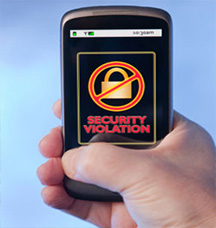Nearly two-thirds of respondents in an Ad Council survey did not have an emergency plan in place for their business — a strong explanation for why up to 40 percent of businesses affected by a natural or human-caused disaster never reopen.
From fires to staff with the flu, creating a plan to address possible risks is key to the prevention or mitigation of those that occur. And they will occur, with 10 percent of small businesses in America experiencing man-made disasters and 30 percent experiencing natural disasters, according to a National Federal of Independent Business National Small Business Poll.
"Any plan is better than no plan," says Jason Gargala, a business risk manager with Ottawa Kent, an independent insurance agency and outsource risk management adviser. "Not only does it make sure the business is going to be viable after some disaster happens, it's also for the health and welfare of every employee."
Here are five steps for creating a business risk-response plan:
1. Identify risks with contingency planning
Determine what aspects of your business most need protection and what likely threats you need to protect against.
Gargala recommends utilizing www.ready.gov, which provides a variety of resources to plan for and protect your business. In addition to your own research, consider an outside risk assessment professional who can offer further resources and tools.
2. Analyze the best way to proceed
Analyze identified risks through various filters — such as how much time, effort and money you're willing to put forth for protection — to determine the best options for your business. Consider when you must undertake methods you can manage yourself, such as various safeguards, and when you can transfer risk to an outside source, such as an insurance company. In some situations, the law may require the business assume responsibility for the risk.
A business impact analysis will help you determine the damage costs of possible disasters, which can then be compared against the cost of what you're trying to protect and how.
"At some point in time, you can start putting money into a black hole if you have all these costs associated with protecting it, overrunning the value of what you're protecting," Gargala says.
3. Develop strategies
Brainstorm different ways you can go about addressing your analyzed risks, whether it be through safeguards, insurance or other methods, and formulate a backup plan.
Consider preemptive measures, such as having automatic backup generators in the case of a power outage, as well as proactive measures, such as alternate locations to conduct business if your facility is unusable. Keep in touch with a real estate agent or company with extra offices for lease that can provide you with a useable workspace on short notice.
"You'd go to them and right away, they'd know what you need and you're ready to roll," Gargala says. "Because what will usually push a company over the edge is their clients will start going to a competitor to get their product, and next thing you know, they like them better."
4. Implement programs
Compile strategies into an emergency response plan, then educate your staff on its procedures. Gargala recommends including an evacuation plan, emergency numbers and the locations of key shut-off valves, including water, electrical and gas, complete with pictures.
Put a plastic-protected version of this plan on a bulletin board for easy access, then distribute digital copies via flash drive and QR codes.
"Even if the place is burning down, they have this ready action plan on what to do next," Gargala says. "They could be sitting in the parking lot and pop this flash drive into their computer to have access to it. It'll mitigate the risk just by taking fast action."
5. Monitor the plan
Keep improving your plan's efficiency by updating against changing needs and growth, as well as its cost effectiveness by keeping up with technology and reevaluating providers.
"If you start going in the right direction, it starts developing a culture in the company that these issues are important," Gargala says.
Although creating a risk-response plan can be a daunting task, the life of your business could depend on it.










